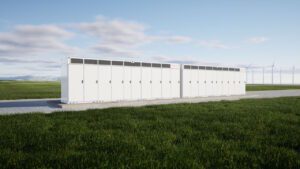The Coalition government’s flagship Snowy 2.0 pumped hydro project has suffered another blow out in costs, this time to one of the major transmission links that is key to deliver its storage services to the rest of the grid.
Snowy 2.0 – the biggest generator to be connected to the grid for 35 years – has been beset by controversy since it was first unveiled by former prime minister Malcolm Turnbull, both on the cost and utility of the 2,000MW project, and on its environmental impact.
The cost of the Snowy 2.0 project itself has already blown out from an initial assessment of less than $3 billion to the latest indications of closer to $6 billion, and that doesn’t include the cost of connecting it to the grid.
The new concerns focus on a near trebling of the the cost of the 330km Hume transmission link to $3.3 billion, from an initial estimate of $1.3 billion, which a new analysis says could result in a substantial increase in transmission fees to consumers and a $60 a year rise in their electricity bills.
The new analysis is produced by three leading energy experts – Bruce Mountain, the head of the Victoria Energy Policy Centre, supported by Ted Woodley, a former head of PowerNet, GasNet and EnergyAustralia; and Dr Hugh Outhred, the head of consultancy firm Ipen.
It is a withering critique of the cost benefit analysis of the Hume project conducted by EY and presented by Transgrid as part of its regulatory investment test application, and of Snowy’s attempts to push the entire cost of the transmission link on to consumers.
The analysts say the combined cost of the project is heading to $10 billion or more, and the Hume Link results in a “dead weight” loss of more than $4 billion and possibly more than $6 billion. They argue the whole project should be brought to a halt, even though construction of Snowy 2.0 itself started 18 months ago.
“Snowy Hydro and the Australian Government chose to proceed with the construction of Snowy 2.0 before the full cost and ramifications of the transmission connection were determined,” the analysis say.
“There was no urgency to proceed with Snowy 2.0 prior to finalising its transmission connection. We and others warned at the time that the likely total costs would far exceed the benefits.
“It is now clear – using TransGrid’s own analysis – that HumeLink and Snowy 2.0 will be a massive impost on taxpayers and consumers.
“The logical (and appropriate) course of action for Snowy Hydro and the Government now, would be to cut their losses.” They say this would result in billions of dollars of money spent with nothing to show for it, but it would be better than throwing “yet more good money after bad.”
They say that, at the very least, the NSW government should require Snowy Hydro to pay its fair share of the cost of HumeLink, so that the economic losses of HumeLink do not fall so squarely on the shoulders of the NSW electricity consumer.
Snowy 2.0 will have a rated capacity of 2,000MW and storage of 175 hours, of 350,000MWh. The company, and its enthusiastic backers in the Coalition government, from Turnbull to current prime minister Scott Morrison and energy minister Angus Taylor, say it is essential for a grid transitioning to renewables.
But there have been questions about whether it’s the best value for money. Sure, analysts say, it will be useful if and when it is built. But many have argued it would have been smarter, more useful, and cheaper to build alternatives such as battery storage and smaller pumped hydro projects elsewhere.
The VEPC analysis says the costs of Snowy 2.0 were strangely excluded from the EY analysis, but the claimed benefits were not. And it questions whether these claimed benefits are valid given the emergence of competing storage technologies such as batteries and hydrogen and the “implausible” assumptions about the amount of time the project would be pumping and discharging to meet the claimed benefits.
“EY does not appear to pay sufficient attention to the additional advantages that batteries and EV’s have compared to Snowy 2.0,” they write.
“Also, there is no apparent consideration of flexible demand, including emerging options such as hydrogen production.”
Part of the reason for the big increase in costs in the Hume transmission link is a near $1 billion for “biodiversity offsets’, reflecting its impact on the national park. But the costs of the transmission link itself have jumped from $1.3 billion to $2.3 billion, reflecting a big increase in costs that has hit other proposed projects.
The VEPC analysis says if the project must go ahead, then alternatives should be considered. It suggests different routes could be considered to either save costs, or increase benefits, including a new connection point that will reduce the environment impact on the national park.
It also suggests that part, if not all, the new transmission link should be put underground. That will increase the initial cost, but it could deliver much biggest benefits, including to improved reliability, less exposure to weather events and bushfires, lower operating costs, less environmental impact and much less local opposition.
“Quelling public opposition is itself a significant ‘cost saving’, it says.








